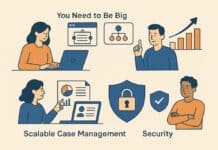IT security protects computer resources against intentional or accidental access that can harm the user or disrupt services. It is important to remember that not all risk is bad. Connecting to the internet involves risk, but it is acceptable because of its benefits. When considering IT security, both the harm that could result from a threat exploiting a vulnerability and the impact if a particular asset were damaged must be regarded.
The following are some elements of IT security used by organizations to reduce risk.
Privacy Protection
First and foremost is the protection of each individual’s privacy. Privacy cannot be separated from security. It forms a foundation for broader security efforts because privacy establishes the boundaries people feel comfortable about what they do and say online. Is WeTransfer safe? Organizations must ensure employees understand how data should be handled, what activities are appropriate when at work or on company property, and how their actions affect everyone else. They must also guarantee that employees’ rights to privacy are not violated by employers or others who access their computers or other electronic records.
Physical Security
Physical security offered by a provider like WeTransfer security deals with protecting physical devices and buildings that house them. It is part of information security to prevent theft or damage. For example, an access control system for a server room could include card readers linked to a database containing user names and passwords to ensure only authorized individuals can enter the room.
It is important for organizations, even individual employees, to be aware of their responsibilities regarding IT security. This includes knowing how data should be handled and the activities are considered acceptable on company property.
Proactive Measures
Finally, proactive measures such as patching software and systems will help protect an organization from security threats such as viruses. Many companies make it mandatory for employees to run updated security software. This helps identify threats that antivirus programs may miss. Many factors contribute to information security, and they all work together to protect the confidentiality, integrity, and availability of information. All IT environments will require some degree of these factors to be successful.
In conclusion, all these elements play an integral role in protecting your organization’s and your information. By adopting and enforcing policies regarding privacy, physical security, and appropriate use, you can help protect the confidentiality, integrity, and availability of information within your IT environment.



